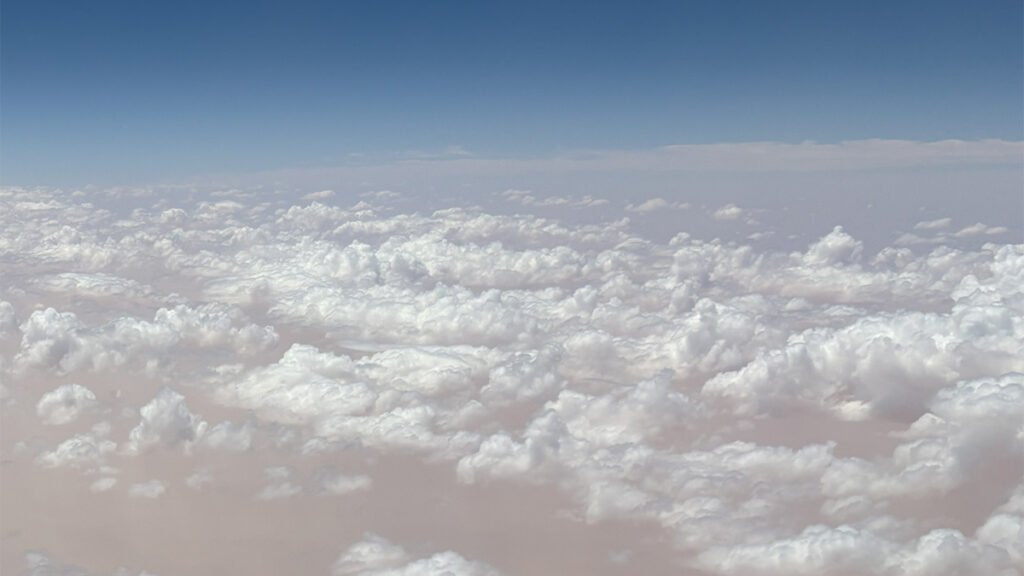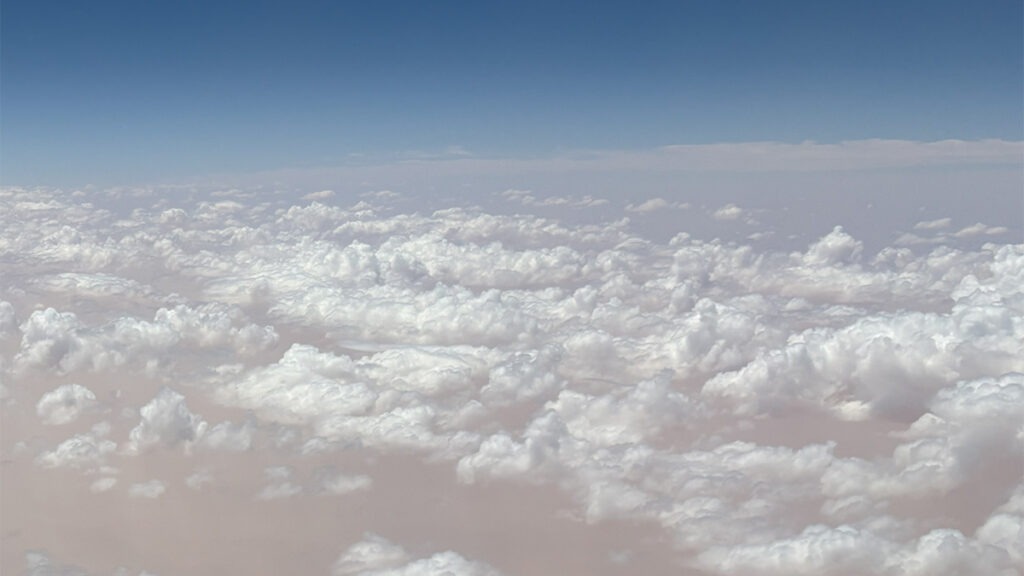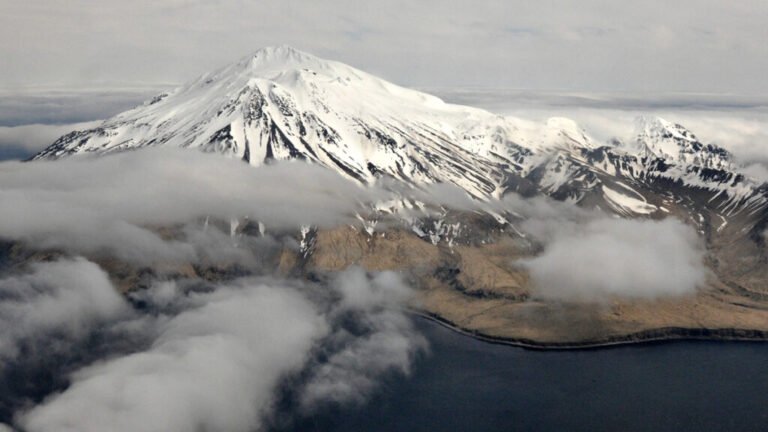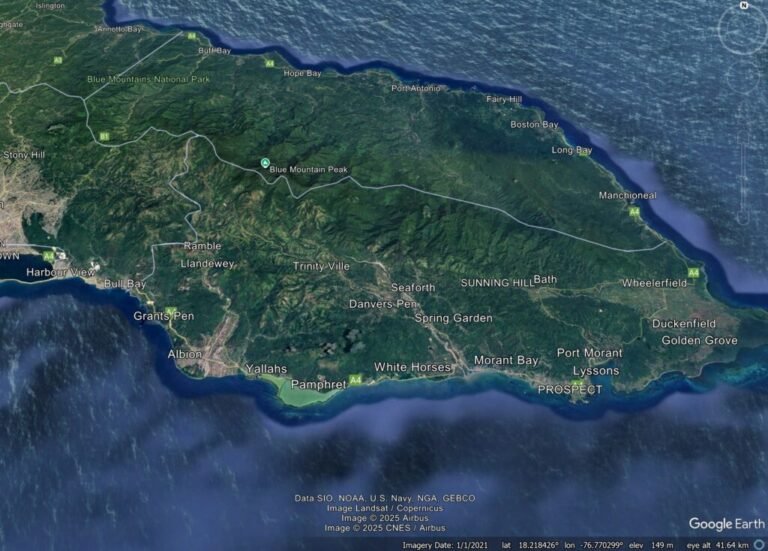

Dust plays a major role in the formation of ice in the atmosphere. A new analysis of satellite data, published in Science, shows that dust can cause a cloud’s water droplets to freeze at warmer temperatures than they otherwise would. The finding brings what researchers had observed in the laboratory to the scale of the atmosphere and may help climate scientists better model future climate changes.
In 1804, French scientist Joseph Louis Gay-Lussac ascended to about 23,000 feet (7,000 meters) in a hydrogen balloon from Paris, without supplemental oxygen, to collect air samples. He noted that clouds with more dust particles tended to have more frozen droplets.
In the 20th century, scientists found that pure water can remain liquid even when cooled to −34.5°C. But once even tiny amounts of material, such as dust, are introduced, it freezes at much warmer temperatures.
“It’s like Schrödinger’s cat. Either there’s an ice crystal, or there’s a liquid droplet.”
In 2012, researchers in Germany were finally able to test this directly in a cloud chamber experiment. They re-created cloud conditions in the lab, introduced different types of desert dust, and gradually cooled the chamber to observe the temperatures at which droplets froze.
For Diego Villanueva, an atmospheric scientist at ETH Zürich in Switzerland and lead author of the new study, it was striking that scientists had uncovered these processes in the lab, yet no one had examined them in such detail in nature.
The challenges were obvious. To watch an ice crystal nucleate, researchers would need instruments on an aircraft or balloon to catch a micrometer-sized droplet in a cloud at just the right moment. “It’s like Schrödinger’s cat,” said Daniel Knopf, an atmospheric scientist at Stony Brook University who was not involved in the work.. “Either there’s an ice crystal, or there’s a liquid droplet.”
In the new study, Villanueva and his colleagues analyzed 35 years of satellite data on cloud tops across the Northern Hemisphere’s extratropics—a region spanning the U.S. Midwest, southern Canada, western Europe, and northern Asia. The researchers wanted to see whether dust influenced whether cloud tops were liquid or ice. They focused on cloud tops, rather than entire clouds, simply because the tops are visible in satellite imagery.
Desert Dust and Cold Clouds
Villanueva and his colleagues examined two satellite datasets covering 1982–2016, trying to infer microscopic details of cloud tops such as the number of ice crystals or droplet sizes. One dataset tracked whether cloud tops were liquid or ice, and the other measured how much dust was in the air at the same time. Although the team examined global patterns, they focused on the northern extratropical belt, where mixed-phase clouds are common and large amounts of dust from deserts like the Sahara and Gobi circulate.
But the “dataset quality was just so poor that everything that came out was basically just noise,” Villanueva added. In the end, the researchers focused on a simpler detail: the fraction of clouds with ice at their tops. “This took me nearly 3 years,” Villanueva said.
The analysis revealed that regions with more dust had more ice-topped clouds. The effect was strongest in summer, when desert winds lift the most dust.
A distinctive pattern emerged: A tenfold increase in dust roughly doubled the likelihood of cloud tops freezing. “You’d need 100 times more dust to see freezing become 4 times as frequent,” Villanueva explained.
“I think the study is quite elegant.”
The new work showed that the same processes researchers have observed at the microscale in laboratories occur at much larger scales in Earth’s atmosphere. Even after accounting for humidity and air movement, dust remained the key factor for ice nucleation in most instances, though there are exceptions. In some places, such as above the Sahara, few clouds form despite the presence of dust, perhaps, the authors suggest, because the movement of large swaths of hot air prevents freezing.
“I think the study is quite elegant,” Knopf said. He explained that taking 35 years of satellite data, finding a relationship between dust levels and frozen cloud top rates, and then showing that it lines up perfectly with lab experiments is basically “the nail in the coffin” for proving dust’s role in ice nucleation. Scientists now have robust satellite evidence of dust aerosols directly affecting cloud freezing, matching what laboratory experiments had predicted.
The finding has implications for climate modeling. To predict the effects of climate change more accurately, models must account for dust and the ways it affects cloud freezing and helps shape precipitation. Liquid-topped clouds reflect more sunlight and cool the planet, whereas ice-topped clouds let in more sunlight and trap heat.
However, Knopf noted that there is more work to be done to understand exactly what the new observations mean for scientists’ understanding of climate. “If you want to really know the precipitation or climate impacts [of dust], you really need to know the number of liquid droplets or the number of ice crystals,” he said.
Villanueva is motivated to keep looking at clouds and aerosols. In the next 10–20 years, the Earth may have drier surfaces because of climate change, which will likely produce more dust aerosols in the atmosphere. He added, “I want to know how clouds will respond in the scenario.”
—Saugat Bolakhe (@saugat_optimist), Science Writer
Citation: Bolakhe, S. (2025), Dust is the sky’s ice maker, Eos, 106, https://doi.org/10.1029/2025EO250328. Published on 5 September 2025.
Text © 2025. The authors. CC BY-NC-ND 3.0
Except where otherwise noted, images are subject to copyright. Any reuse without express permission from the copyright owner is prohibited.


